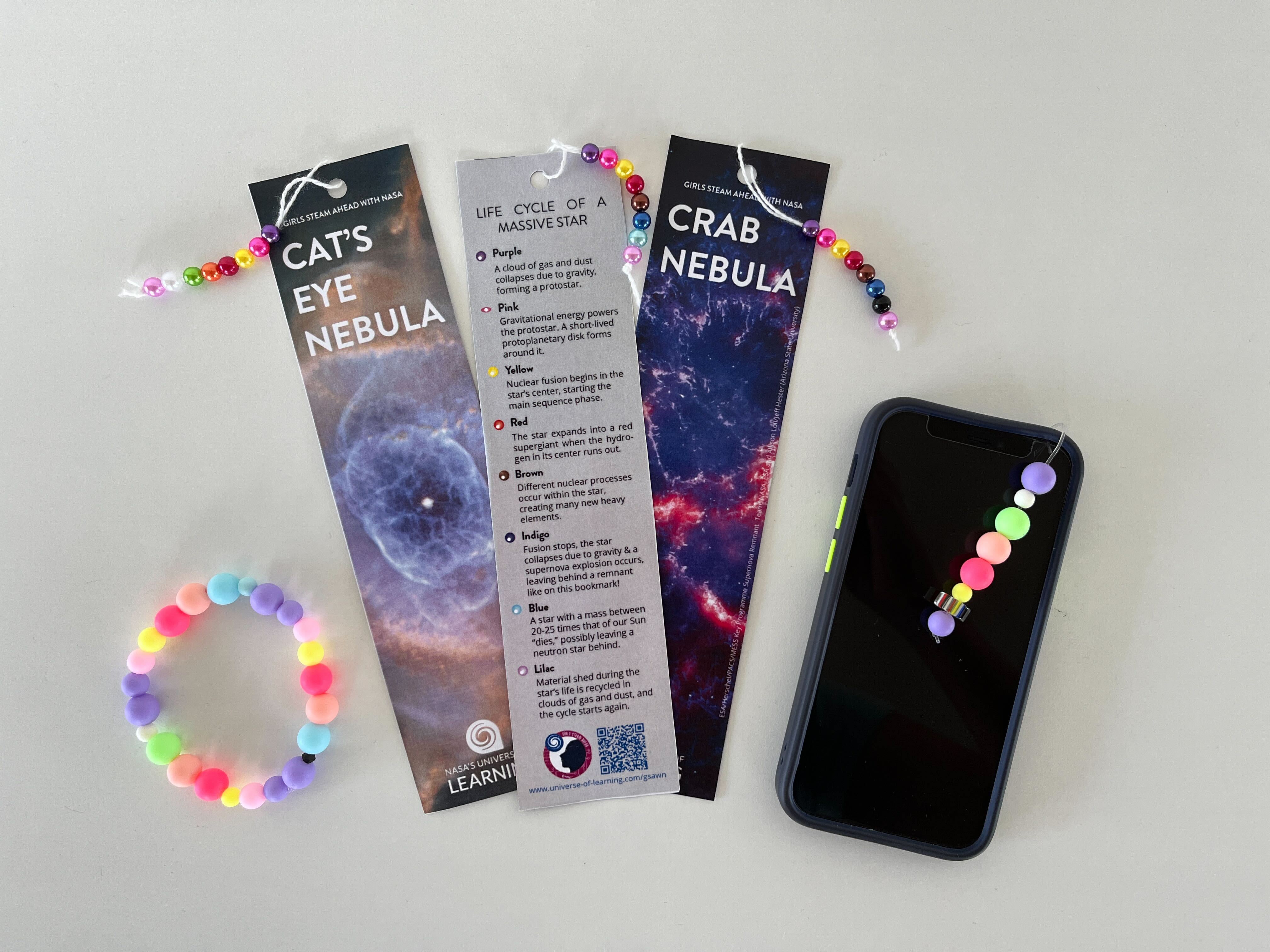Stellar Evolution Made Simple: Hands-on Activities for Cosmic Explorers
Martha Irene Saladino
Space Telescope Science Institute
Welcome to the AAS Education Blog! This post is part of a biweekly series of blog posts from astronomers and educators in the extended AAS community, curated by the AAS Education Committee. Subscribe here to receive future posts directly into your inbox; also follow us on Twitter. We welcome feedback and topic suggestions, as well as guest article submissions! — AAS Education Blog Editors
Imagine you are new to baking and want to surprise family and friends with a delicious homemade Moon Pie. You don’t know where to start, but a search engine or a cookbook seem like a reasonable option. You find a recipe, gather the ingredients, follow the steps to the best of your ability, and voilà; even though you are not a professional chef, your Moon Pie is a success!
This is the reasoning behind the free Program Cookbook from Girls STEAM Ahead with NASA (GSAWN), a NASA’s Universe of Learning project. While we don’t offer recipes to bake delicious desserts, we provide carefully crafted recipes to empower facilitators, giving them confidence in creating STEM events to engage girls and their families in the wonders of NASA science.
The recipes in the GSAWN’s Program Cookbook cover different astronomical topics and include a special recipe to celebrate women in STEM. Each recipe contains a “menu” from which facilitators can choose resources to shape their events, and at least one 60-minute sample scenario that guides them to make their events a success. As we are aware of the diversity of participants who may attend an event, we also provide tips and adaptations to engage different audiences.
This year, we added a new recipe about the life cycle of stars. Although stars are pretty and shiny in the night skies, we should not let them fool us. Astronomers know that star’s lives are far from easy. For this reason, the GSAWN team aimed to make the stars’ lives and deaths understandable to everyone and boost facilitators’ confidence to put together an event that spotlights them.
In our endeavor to design materials suitable for facilitators across different settings, we have created three free hands-on activities — available as stand-alone resources through NASA’s Universe of Learning website — to complement the new recipe: an interactive flipbook that peeks into the evolution of stars, a colorful bookmark that marks their life stages, and a scavenger hunt to uncover their lives.
The Stellar Evolution Flipbook is a small visual booklet that gradually unfolds the birth, life, and demise of a star. In this activity, participants can color different pages depicting the evolution of a star while listening to its tales, and facilitators can focus on revealing the life of a Sun-like star or a massive one. Although aimed at 12+ years old participants, this activity includes an adaptation for younger audiences.
Animation of the Stellar Evolution Flipbook for a Sun-like star.
In the Stellar Life Cycle Bookmark, participants will “mark” each phase in the incredible journey of a star’s life with colorful beads attached to a string on the bookmarks. Attendees will be guided by the information in the bookmarks, which are illustrated with stunning NASA images depicting the grand finale of Sun-like or massive stars. To reinforce that star stuff gets recycled in the universe, an adaptation is included to craft a dazzling bracelet instead. And for tech-savvy enthusiasts, there is a nifty adaptation to create a cosmic phone charm.
The best part is that at the end of either stellar journey — flipbook or bookmark — participants will have a cosmic souvenir to take home!

Stellar Life Cycle Bookmarks, and examples of the beaded bracelet and a phone charm that can be created.
Finally, in the Stellar Evolution Scavenger Hunt, event attendees will embark on a cosmic mission. Geared up with astronomical images and illustrations — taken from the Astropix database, another NASA’s Universe of Learning project — and their descriptions, participants will explore different stages in the life of a star and solve the mystery of what type of object the life cycle we show belongs to.
Packed with recipes and activities out of this world, the GSAWN team look forward to facilitators — and professional astronomers participating in outreach events — crafting STEM events centered around the amazing life cycle of stars to inspire and encourage girls to be deeply interested in the marvels and mysteries of the universe.

